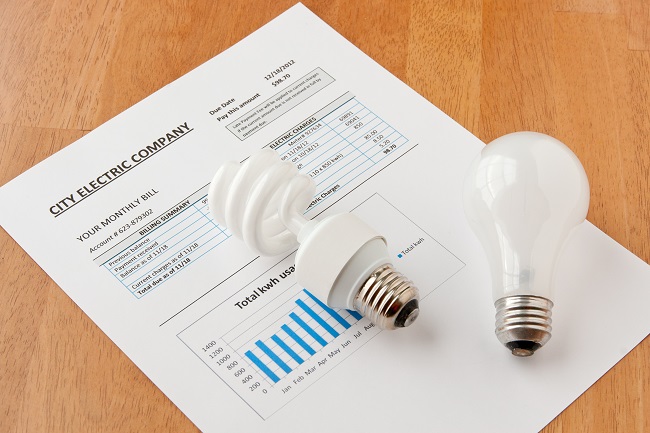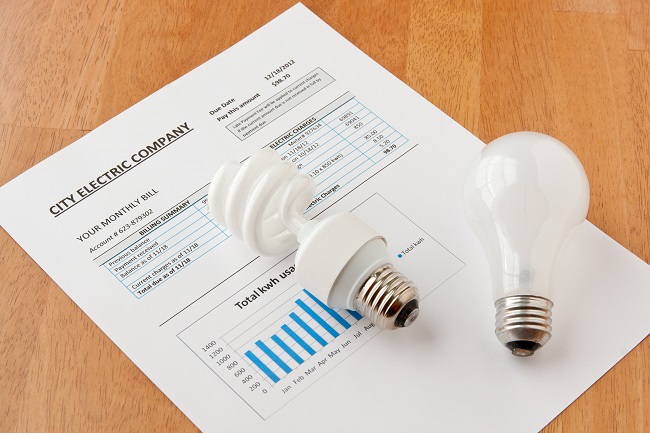
Are you spending $200, $300, $400, or even $500 on electric bills every month? With the gas prices skyrocketing, paying for these utility bills may be too hard to swallow when times are tight. There are many easy, effective things you can do without an extreme home makeover. Energy efficient enhancement can range from changing your light bulbs, sealing ductwork to adding attic insulation. When consumers get lower utility bills it means that we all get a cleaner environment. Electric companies often produce electricity by burning fossil fuels such as coal, oil, and natural gas. The burning of these fossil fuels contributes to global warming and pollutes the air. Here are the different ways to save on utility bills.
Proper insulation
According to Consumer Reports, a home that is properly insulated and sealed improves energy efficiency by up to 15% to 30%. Check for cracks around doors and windows and apply caulks and weather stripping to prevent leakage. Caulking and weather stripping are a very low-cost-energy-saving measure that helps you save money on your heating and cooling bills while preserving the temperature inside your home.
Minimize Phantom Loads
Also known as standby power, vampire power, vampire draw, or leaking electricity refers to the electric power consumed by an electronic device while it is turned off or in standby mode. It is the amount of energy that retains your TV settings and keeps the clock going on your VCR and microwave. According to the U.S Department of Energy, “In the average home, 75% of the electricity used to power home electronics is consumed while the products are turned off.” To eliminate phantom loads, you can simply invest in a power strip sold at hardware stores, home-supply stores, or local department stores and plug all the electronic devices in a power strip and turning the strip off when they are not in use. Furthermore, unplug rarely used appliances such as TVs, VCRs, computers, microwaves, and other audio equipment so that it can’t consume energy.
Invest on Energy Saving Appliances
Refrigerators and clothes dryers are large household appliances and thus consume huge energy. If you are shopping for new appliances, make sure to look for the Environmental Protection Agency’s Energy Star label. Energy Star is a federal program that rates appliances on their efficiency so that consumers can make smart choices. Investing in new energy-efficient appliances can cut long-term bills. The consumption of appliances that don’t have the Energy Star seal may cost you more than the unit itself.
Replace the Light Bulbs
According to Energy Star, a qualified compact fluorescent light bulbs or CFL will save you about $30 over its lifetime and pay for itself in about 6 months. It uses 75 percent less energy and lasts about 10 times longer than an incandescent bulb. CFL use at least two thirds less energy than standard incandescent bulbs to provide the same amount of light. Moreover, they generate 70 percent less heat so they are safer to operate while helps in cooling your home.
Change Filters Regularly
A dirty filter makes your heating, ventilating, and air-conditioning system to be less efficient and takes more energy. Dirt and age could lead to wear and tear on the motor but changing filters regularly will prolong the life of your unit. A study performed by Louisiana State University showed that regular cleaning, adjustment, and tuning affect the electrical efficiency of a HVAC system. They found that average residential air conditioning and heating system saved 421.6 kwH after regular active maintenance was performed.
Air-drying Clothes
Air-drying clothes is the quickest way to save energy. A clothes dryer accounts for a whopping 12% of electricity use in a typical household. The heat of the sun tends to dry clothes faster plus it has a sanitizing effect. When it rains for a solid week, simply hand the laundry up inside. There are various drying racks and clothesline that can be bought in many department stores with every shape, size and type that will surely fit in any parts of your home. For outdoors, a rope or a shower-curtain rod can be used as a line system for your clothes. For inside use, a smaller freestanding foldable or a wall-mounted racks can be of use. A larger freestanding, wall mounted, and ground mounted one is typical for a yard or balcony.
Install Curtains or Drape
Curtains or drapes are commonly overlooked by many price-conscious individuals but curtains tend to be one of the effective ways to save on electric bills. A room gets hotter without shades to block the sunlight and thus makes your air-conditioner work harder. Closing the drapes during the summer months keeps the sun from coming in to heat up the house while in the winter, opening the drapes in the day allows the sunlight to heat up the room and closing them at night keeps heat from leaking on through the glass windows.
Set up a Programmable Thermostat
The USDE estimates that you’ll save 10 percent off your utility bill just by installing a programmable thermostat. This allows you to set the target temperature higher in the summer and lower in the winter or even on Saturday and Sunday when your family won’t be at home. Investing on a programmable thermostat is way cheaper as the prices have come down so much. In fact, you can buy one for as little as $25 and installing it is quick and easy. Adjusting the temperature by 10 to 15 degrees Fahrenheit when you are not around can save you up to 10 percent annually on your energy bills.
